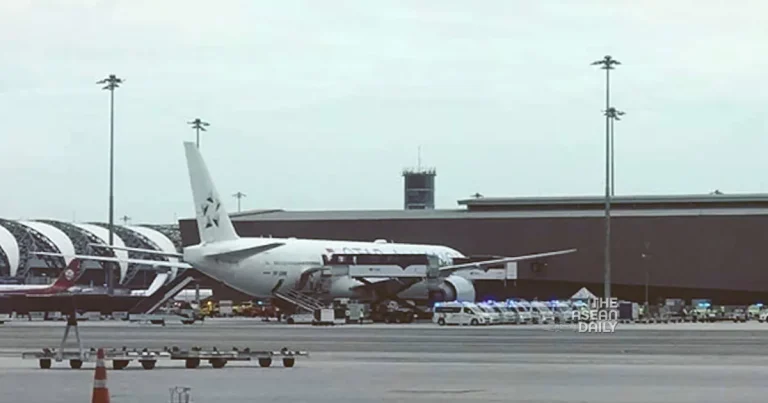24-5-2024 (SINGAPORE) In the wake of a tragic incident where one passenger died and scores were injured due to severe turbulence on a flight from London earlier this week, Singapore Airlines has announced tighter cabin service rules when planes encounter such conditions.
The airline stated on Friday that it is taking a “more cautious approach” to managing turbulence after Flight SQ321 suddenly lost altitude on Tuesday and was forced to make an emergency landing in Bangkok. One man lost his life, and dozens of passengers remain in Thai hospitals suffering from serious trauma, including spinal cord damage and head injuries.
Under the new guidelines, in-flight meal service will be halted when the seatbelt sign is switched on, in addition to the suspension of hot drinks. Crew members will also return to their seats and strap themselves in.
“Singapore Airlines will continue to review our processes to prioritize the safety of crew and passengers,” the airline said in a statement.
The policy revision stops short of requiring all passengers to wear seatbelts throughout the trip, irrespective of flying conditions at the time. Airlines typically advise travelers to do this and only instruct them to sit down and buckle up during unstable weather.
The injuries sustained by passengers underscore the immense vertical forces that can overwhelm anyone who isn’t strapped in when an aircraft suddenly plummets. On Flight SQ321, people were catapulted into the cabin roof, and personal belongings and items from the breakfast service were hurled around the aircraft.
According to Samitivej Srinakarin Hospital, 22 passengers have received treatment for spinal damage, and six have suffered skull and brain injuries as of Thursday. Twenty were in intensive care, while 17 have undergone surgery. In the immediate aftermath of the flight, more than 100 people required medical care in Bangkok.
In its statement, Singapore Airlines acknowledged that pilots and cabin crew are aware of the hazards associated with turbulence. The cabin crew is already trained to secure all loose items and equipment to minimize the risk of injury in these situations.
Turbulence can occur when a plane hits a strong air current that pushes or pulls the airframe. The phenomenon can be caused by pockets of hot air or powerful weather systems. At higher altitudes, aircraft might encounter clear air turbulence caused by air masses with differing velocities, which can be challenging to identify.
The forces involved can fling passengers around with such force that it can be as dangerous as falling headfirst off a ladder or diving into a shallow concrete swimming pool, according to Rohan Laging, deputy director of emergency services at Melbourne hospital group Alfred Health.




